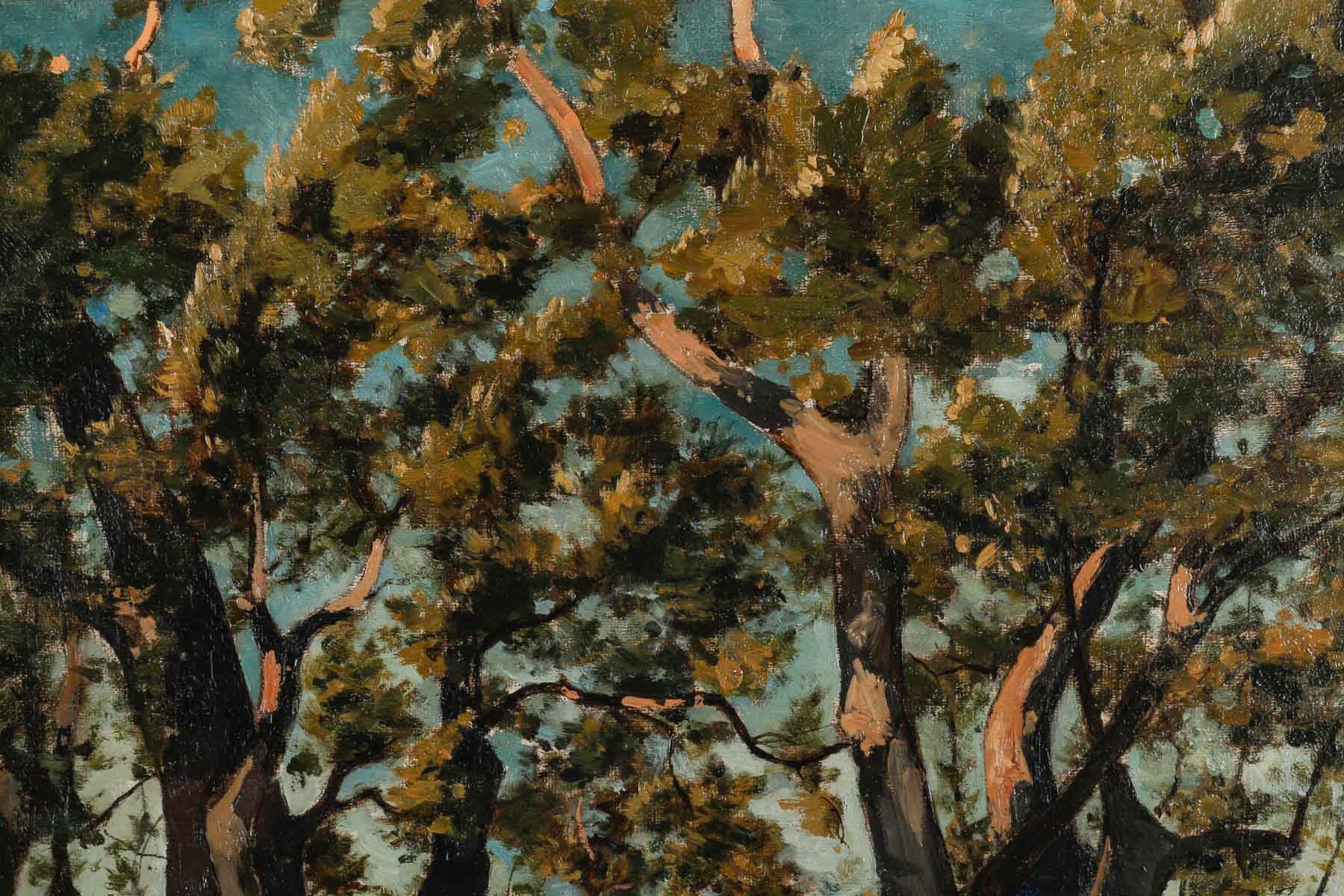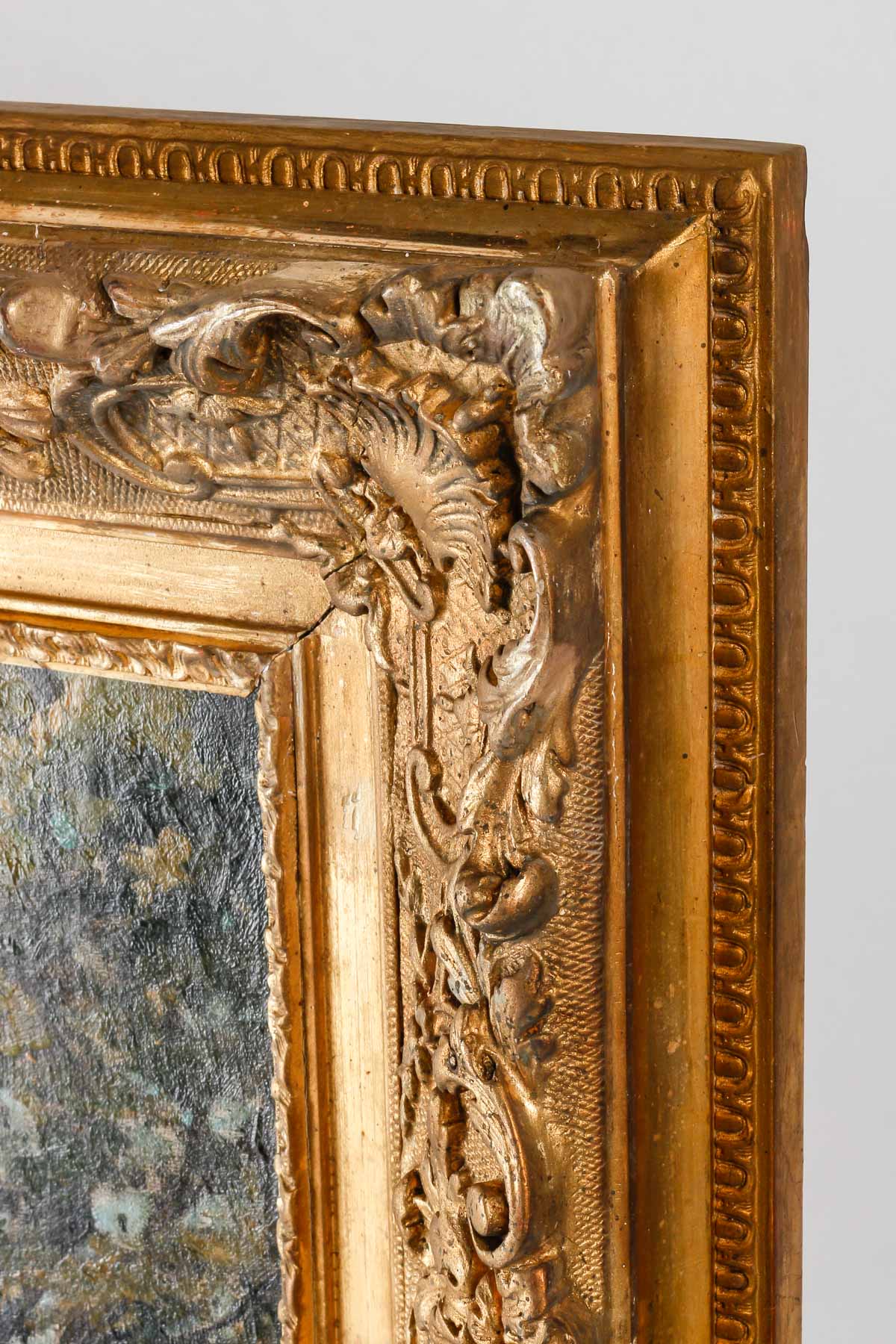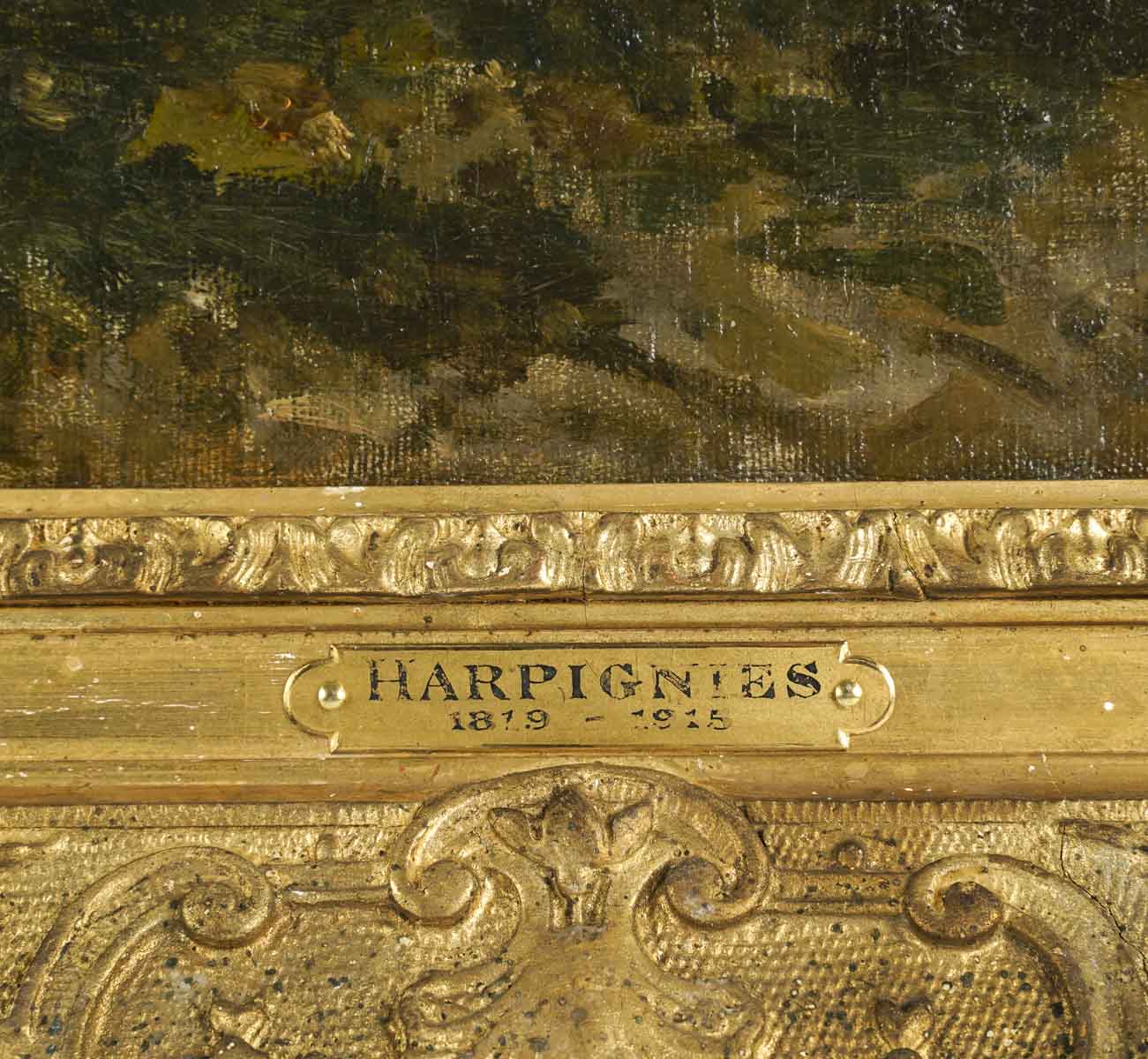Henri Joseph Harpignies
A view of Cap d’Antibes, French Riviera, circa 1880 by a Barbizon painter Henri Joseph Harpignies. A luminous, contrasting painting with an impressionist touch.
Oil on canvas
Dimensions: 46 x 38 cm
With frame: 68 x 57 cm
Price: €9,000
Cap d’Antibes, French Riviera.
Henri, Joseph harpignies spent many years in Antibes, on the French Riviera, and painted many views of this exceptional landscape; a region where everything remains unchanged: sun, light, blue sky, evergreen trees.
His views of the Côte d’Azur, involving a search for luminosity and great freedom of execution, are among his most successful works. From 1878, Harpignies divided his time between the Côte d’Azur in winter and Saint-Privé in summer.
A shot through the trees.
Like Paul Cézanne’s L’Estaque seen through the pines, it’s through the foliage of two trees, his favorite subject, that we discover Cap d’Antibes, the shimmering sea, the old town, the square fort and the Mercantour mountains in the distance.
As if through a curtain of greenery, the painter has perfectly captured the beauty of the place and its particular light.
Biography
“The Michelangelo of trees and peaceful countryside” Anatole France
Henri Joseph Harpignies, born in Valenciennes (Nord) and died in Saint-Privé (Yonne), was a French landscape painter, watercolorist and engraver of the Barbizon School.
Henri Joseph Harpignies’ parents intended him for a commercial career, but his determination to become a painter led them to allow him to enter Jean Achard’s studio in Paris in 1846. After two years’ training, he travels to Italy.
Back in France in 1850, Henri Harpignies devoted himself to children’s bambochades in landscapes, joining Corot and the Barbizon School, who were to inspire him. A close friend, the two artists made a trip together to Italy in 1860.
In 1859, he collaborated on the decoration of the staff room at the Hôpital de la Charité in Paris, partially rebuilt in the Assistance Publique – Hôpitaux de Paris museum.
On his return from Italy in 1861, he achieved his first success at the Salon. He then exhibited regularly at the Salon. In 1866, he received his first medal for Le Soir dans la campagne de Rome, acquired by the State.
Over the course of his very long career, Henri Harpignies painted a large number of works in the center of France. He produced decorative works for the Paris Opera, including the Val d’Égrie panel, which he exhibited at the Salon in 1870. He was a friend of Léon Bonnat, who painted his portrait twice in 1889 (Musée des Beaux-Arts de Valenciennes and Petit Palais in Paris).
He painted the stained-glass windows of the Château de Trousse-Barrière in Briare in 1895. In 1898, he was named Honorary Rosati.
He won numerous awards. Medals at the Paris Salon in 1866, 1868 and 1869. Second-class (silver) medal at the 1878 Universal Exhibition. Medal of honor in 1897 for Solitude et Bords du Rhône.
In 1875, he was named chevalier, then promoted to officer (1883), commander (1901) and grand officer (1911) of the national order of the Legion of Honor.
He was buried in the Saint-Privé (Yonne) cemetery.
Bibliographie
• Dictionnaire Bénézit.
• Dictionnaire des peintres paysagiste français au XIXème- L Harembourg
• La France illustrée, no 1176, 12 juin 1897, p. 24.
• Société des artistes français, Explication des ouvrages de peinture, sculpture, architecture…, Salon de 1897.
• Henri Harpignies 1819 1916. Peindre la nature, [catalogue d’exposition], Cosne-Cours-sur-Loire, Musée de la Loire, 2016, 51 p.
• Elric (dessin) et François Darnaudet (scénario), Harpignies, Paquet, 2014.
Musées
France
• Paris, Le Louvre ; Petit Palais
• Lille, palais des Beaux-Arts : Vue prise à Moncel-sur-Seille (Meurthe-et-Moselle), vers 1868
États-Unis
• New York, Metropolitan Museum of Art: Paysage avec une ville au loin
• Tulsa, Philbrook Museum of Art : Pont ferroviaire sur la Briare.
• Washington, National Gallery of Art : Paysage en Auvergne.
Canada
• Montréal, Musée des beaux-arts de Montréal : Clair de lune (1889)
• Québec, Musée national des Beaux-Arts du Québec : Paysage
Argentine
• Buenos Aires, musée national des Beaux-Arts : Le Canal de Briare.
Source
https://fr.wikipedia.org/wiki/Henri_Harpignies
https://www.persee.fr/doc/rnord_0035-2624_1992_num_74_297_4768









